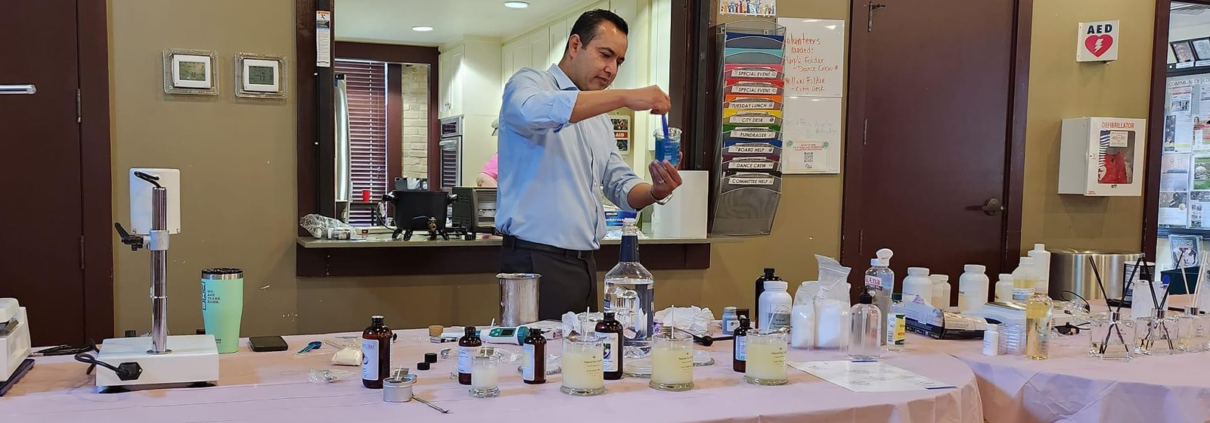The Faces of Luminex: Miguel Zuniga, Chemistry, R&D
By Caitlin Butterworth
xMAP® Technology—the original multiplex technology upon which Luminex was founded—depends upon the magic of coupling detector beads with analytes of interest. Even decades after xMAP®’s initial deployment, our scientists continue to refine the multiplexing process so we may offer our customers the cutting-edge features they need to achieve their goals. To maintain these improvements, we rely upon the work of team members like Miguel Zuniga, Scientist III, who joined the Luminex team in 2016. Miguel holds a bachelor’s degree in analytical chemistry from Texas State University and a PhD in both chemistry and biochemistry from Virginia Commonwealth University.
Q: What are your responsibilities at Luminex?
A: I work for the chemistry R&D group, where we develop new reagents to support our xMAP partners and Luminex instruments. I work on projects to improve our microsphere technology and ensure reagents are compatible across various software and hardware. This gives our partners more options to develop multi-analyte testing.
Q: How did you get started on this career path?
A: I have always enjoyed chemistry because it helps you understand how molecules work, and makes you think of how to solve challenging problems to benefit society. Out of school, I wanted to work in industry (rather than academia), so I worked for startup companies in biotech, molecular imaging, pharmaceuticals, and formulation chemistry. Before Luminex, I worked on a project to enhance the formulation for artificial lenses essential for post-op eye surgery patients, and from that experience, I became determined to create products that improve quality of life.
Q: What drew you to Luminex?
A: Luminex has a great reputation based on xMAP Technology, so I wanted to utilize my research skills and work with Luminex’s talented team of scientists. Being hired by the chemistry R&D team let me realize my dream of working for a leading molecular diagnostic and life science company that rewards research and innovation.
Q: If you could solve any clinical or genetic challenge, what would it be?
A: I would like to develop a rapid diagnostic test able to alert individuals of an early stroke, because strokes can happen suddenly to people of all ages, even those in good health. Stroke diagnosis is crucial to receiving appropriate medical care to improving the probability of a full recovery. The only risk factors used as stroke indicators currently are headaches and high blood pressure, so a more reliable test is needed.
Q: If you weren’t at Luminex, where would you be?
A: I would be working on technology to improve biotherapeutic formulations and doing fun research on herbal ingredients to reduce fungal ear infection for dogs.
Q: What is something about you that no one at Luminex knows?
A: Most people do not know that I enjoy investing in real estate and building affordable housing. My extended family works across several trades, so I’m able to serve as a general contractor and take care of routine maintenance myself.
Q: Where else have you learned new skills?
A: My community relationships helped me become elected to the Kyle City Council. It is one of the fastest-growing cities near Austin and I have helped on the council by planning for new roads and high-density zoning to pay for infrastructure. I’ve used my scientific background to protect natural green spaces and water resources, and have communicated to residents how storm water and waste treatment plants operate.
Q: What’s your favorite thing to do in Austin on the weekend?
A: I enjoy formulating cosmetic products as a hobby, and one of my favorite products to make is tea tree and menthol shaving cream. I spend time learning about ingredients from patents that cover household products.

